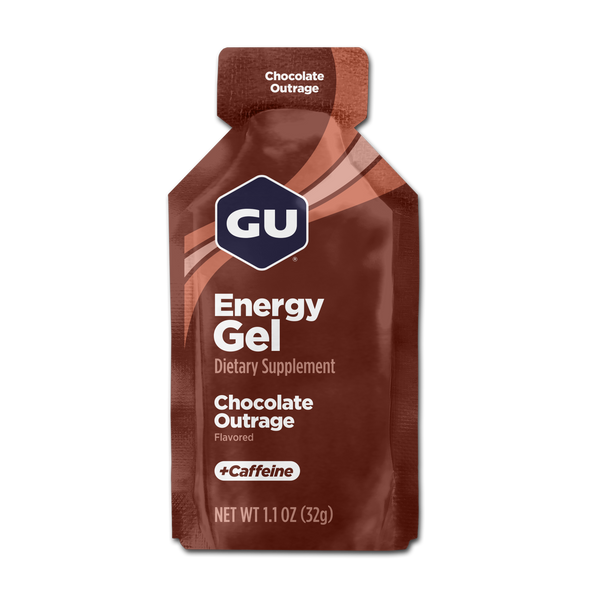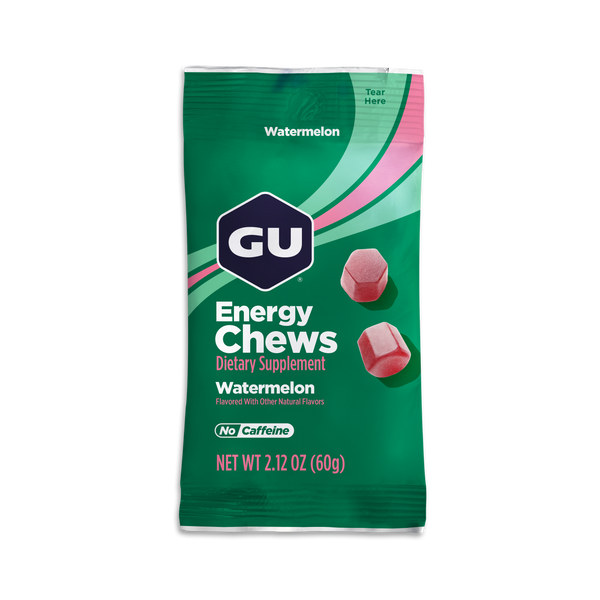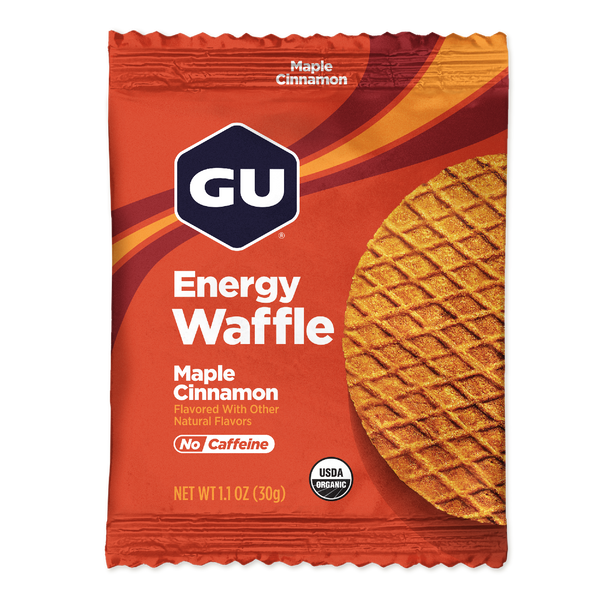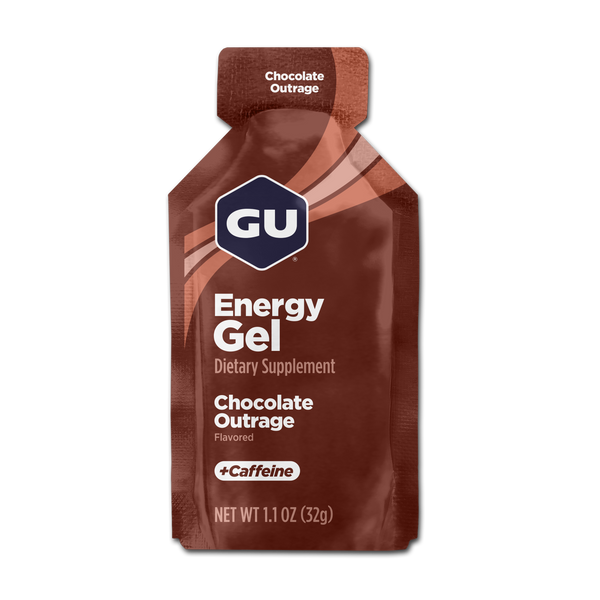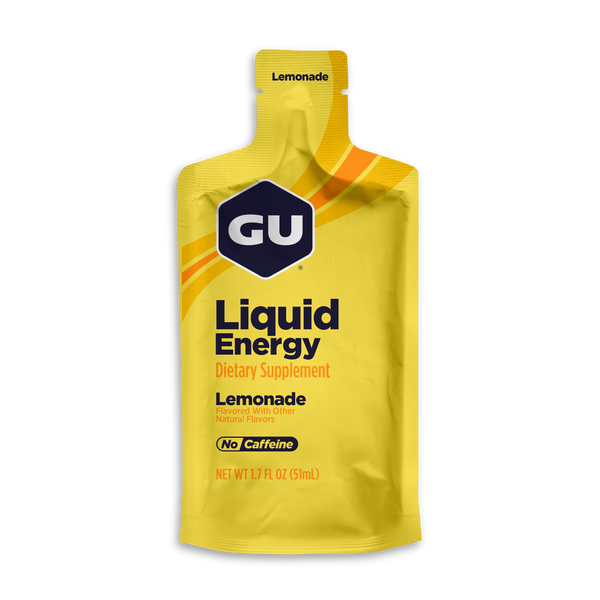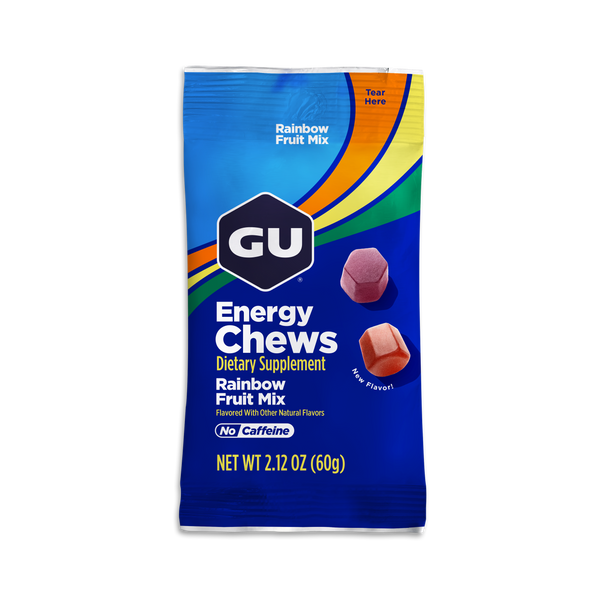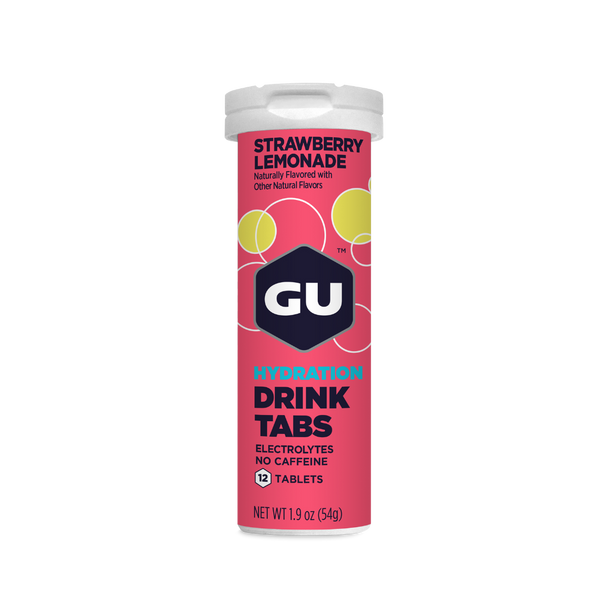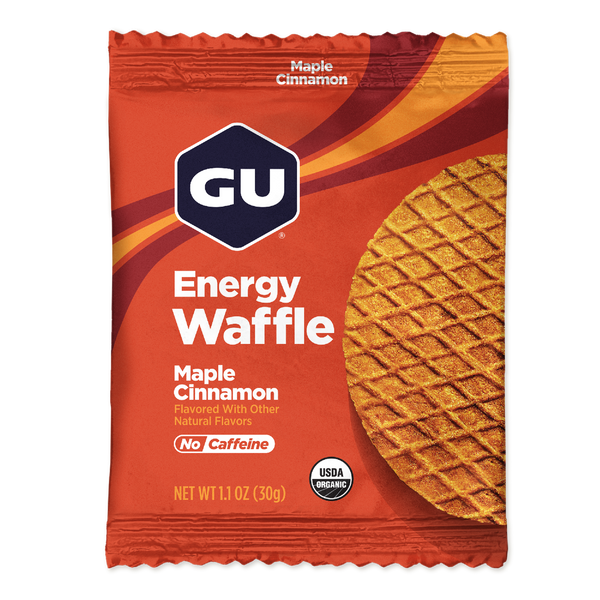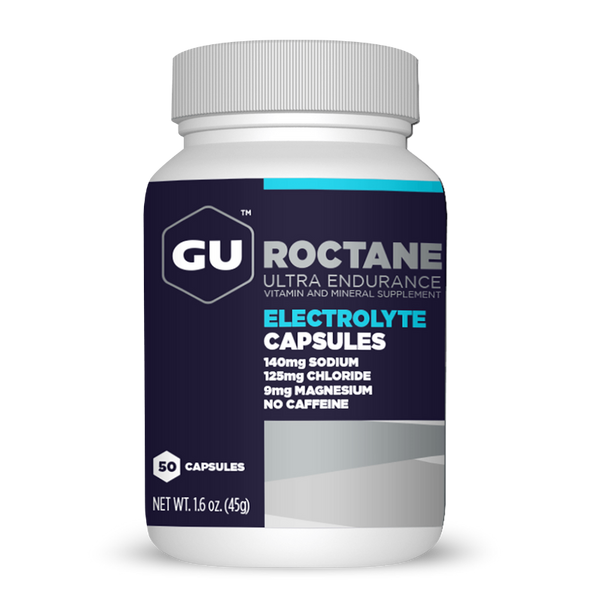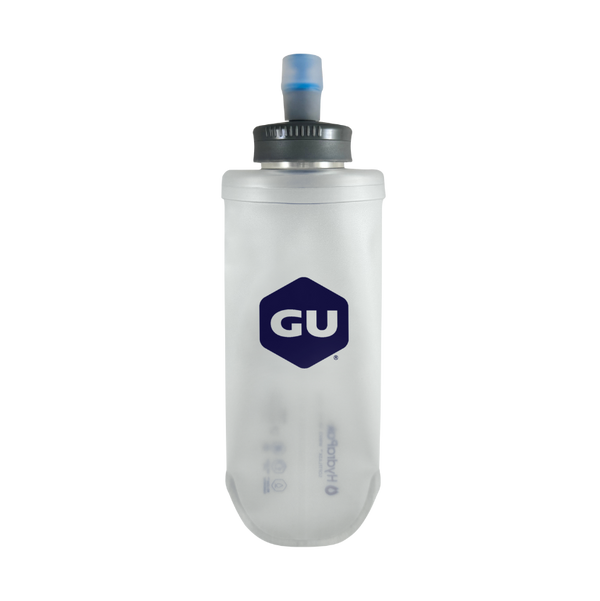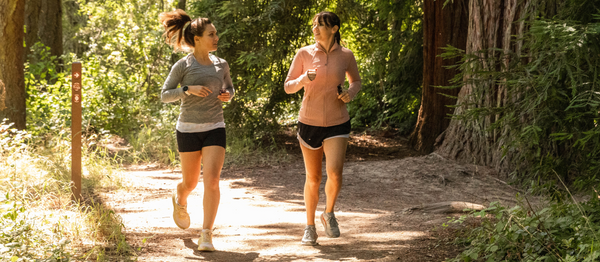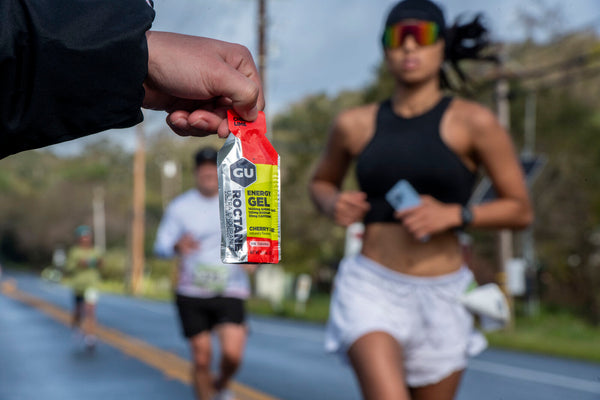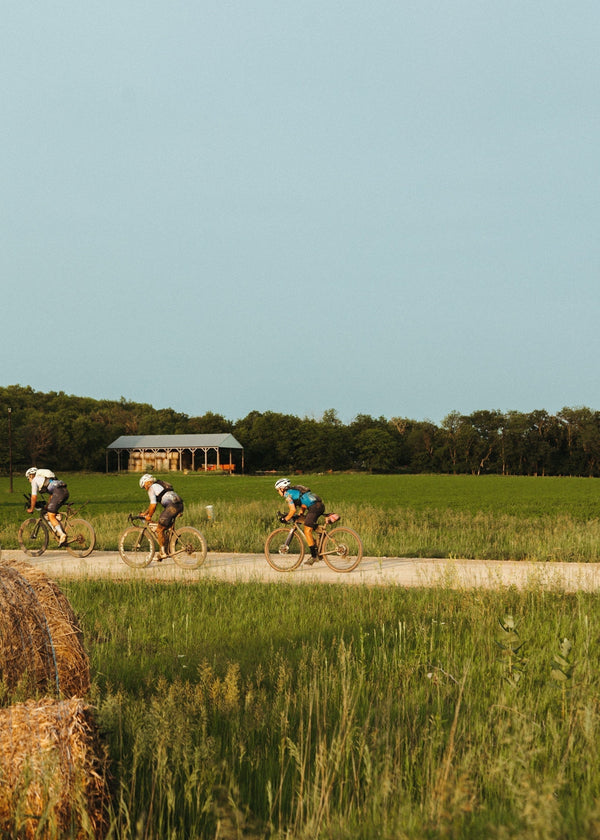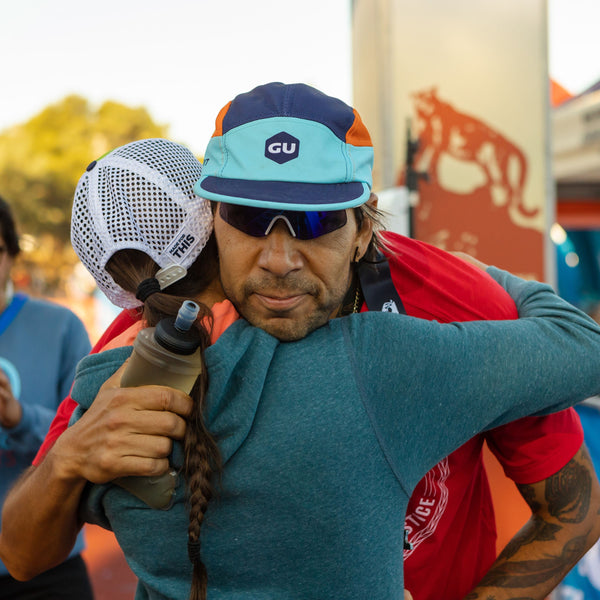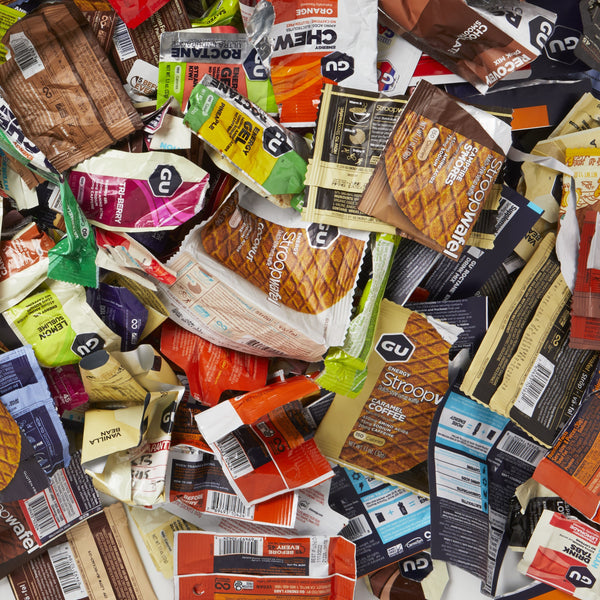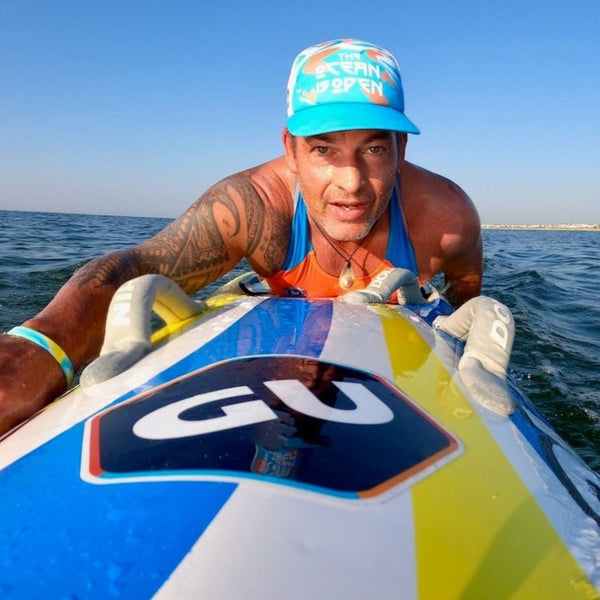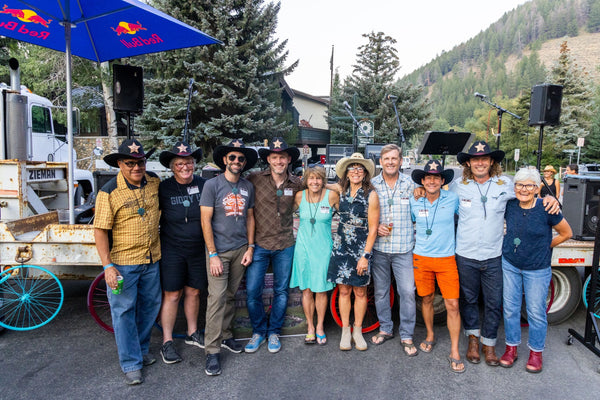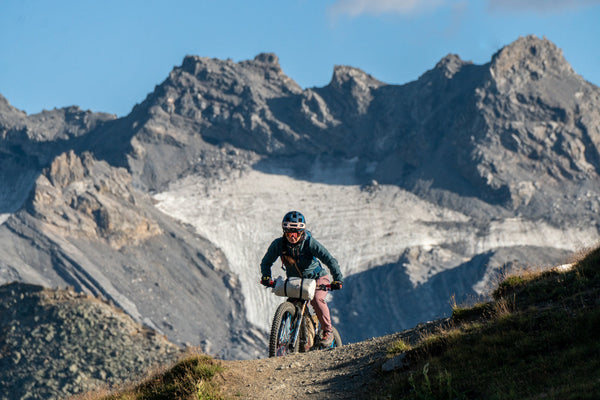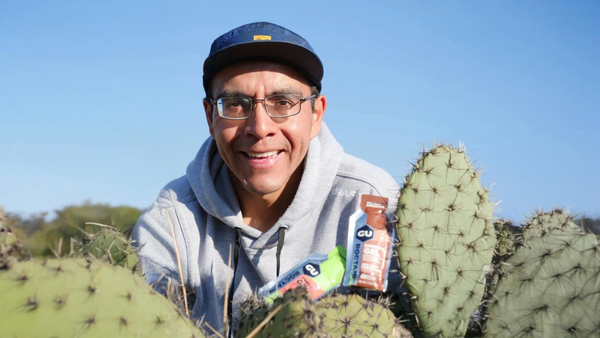If you know the Javelina Jundred, you know Patrick Reagan. In 2017, Patrick set a lighting fast course record, running 100 miles in 13:01:14 (for all the numbers people, that’s 7:48 per mile pace!) In 2018, he followed up his stellar performance with another win. His streak of wins and podiums in recent years granted him a wild-card spot at the 2019 Western States Endurance Race, and he proved to the ITU that selecting him was no fluke. Patrick recently finished WSER in 8th overall, running 15:54 over the 100 miles in the Sierras. Not bad for someone who is used to the flat Georgia pavement!
But what sets Patrick aside from most runners is his attention to detail. Recently, our very own Magda Boulet started coaching Patrick… and when you’re coached by the VP of Research & Innovation at GU, your nutrition is going to be dialed.
We caught up with Patrick to get a little more info behind his tried-and-true nutrition plan. Javelina Jundred is a unique event, and Patrick provides key insights that could be the difference maker while running through the desert heat.

NUTRITION Q&A WITH PATRICK REAGAN
1. If you could create a short tagline that describes your nutrition plan, what would it be?
“Be adaptable, keep eating, keep running.”
My nutrition plan is all about ingesting the right number of calories per hour at the proper frequency while focusing on the medium that is working for me at different stages in the race. (By ‘medium’, he means the food form — i.e. gels, solids, liquids, etc.)
For example, GU Roctane Summit Tea works very well for me early in the race and during the hottest parts of the day. Stroopwafels tend to work well for me early in 100 milers. The lionshare of my calories come from Roctane Gels.

Patrick (left) and Jeff Browning (right) at the start of WSER 2019. Photo Credit @Trailjunkiephotos
2. What are your top 3 nutrition tips for someone racing Javelina Jundred (or any 100)?
Javelina Jundred is all about managing the heat so you can continue to ingest the number of calories that works well for you.
- Topical cooling and management of your core temperature is one of the critical components of your body able to ingest and absorb calories. By taking your time to topical cool at aid stations with ice bandanas, ice hats, and cool water on your skin…you’ll be able to keep moving and keep fueling.
- Be adaptable. Have multiple plans for the medium of nutrition you plan to take in during your 100 mile run. My usual nutrition plan consists of 330-400 calories per hour. On the fly, I alternate between GU Roctane Summit Tea, GU Roctane Gels, GU Chews, GU Stroopwafels, GU BCAA Capsules, Watermelon, and Boiled Potatoes/Salty Chips. Traditionally, Roctane Gels make up the lionshare of my calories, but I like to break up the use of Gels with Summit Tea and Stroopwafels.
- Respect the heat and keep the pace sustainable: With Javelina Jundred being a relatively flat race, you do not have a natural inclination powerhike like on some courses. It’s important to keep the pace/effort controlled during the hottest parts of the day. Runners focusing on breaking 24 hours at Javelina have time to take walk breaks throughout the race. During that time/time in aid stations, focus on fueling and lowering your core temperature.

Patrick mid-race in the 2018 Javelina Jundred. He won in consecutive years in 2017 & 2018.
3. Does your nutrition plan change for Javelina compared to other races?
My nutrition plan for Javelina is quite similar to other races with the exception that I hydrate much more. Taking in 24-30 oz of water per hour plus dumping upwards of a gallon of water on my body per hour is common for me at the race. At every aid station, I leave with 1/2 lb of ice in my hat and 2 lbs of ice in my Ice Bandana.
4. You consume a relatively high amount of calories per hour – did you train your stomach to take more? If so, how?
I’ve utilized GU Products on most of my training runs for four years now. It has taken me time to get used to taking in 350-400 calories per hour. When first starting ultras, I was comfortable with 200 calories an hour, but with practice I was able to stretch to 300 calories per hour for the 2016 IAU 100K World Championship. My first hundred miler was the Javelina Jundred in 2017. I was able to smoothly consume an average of 375/400 calories per hour when incorporating calories from watermelon/potato chips.
For the 2018 Javelina Jundred and 2019 Western States, I was able to consume upwards of 400 calories per hour. This took years of practice for me to find the amount of calories that is right for me. In order to eat this much, I am constantly balancing core temperature and proper perceived exertion. Being thoughtful about when to take calories is also important. At Western States, I am able to eat a lot on the uphills because I’m hiking 75-85% of the time; thus, the perceived exertion and jostling of the stomach is much lower

5. We saw that you mixed it up a couple times throughout Western States – going from summit tea and stroops to chews and gels, then back to summit tea. What was the strategy behind this?
Much like one of my main tips for runners, being adaptable is quite important. When I am tired of a certain flavor or medium of food mentally, it’s a good indicator from my stomach that it’s time to switch foods. In the first few hours of the race at Western States, the pace was quite slow with a massive amount of hiking due to snow and elevation gain. In this stage (being a smart Hobbit), I simulated second breakfast. Since the weather was so cool and the perceived exertion/jostling of stomach were so minimal in the early stages…this is where I chose to eat most solid foods I would consume during the day.
Hour 1: Serving Summit Tea and 3 BCAAs = 280 calories.
Hour 2: 2 Stroopwafels and 3 BCAAs = 310-330 calories.
Hours 3-Finish: 3 Roctane Gels + 3 BCAAs + 70 Calories of Fruit/Chips = 400 Calories.
There are certain hours that I take a break from Gels and switch to a blend of Summit Tea, Fruit, and Chips or Summit Tea and Stroopwafels. If I get tired of Gels, I usually switch to Chews and Summit Tea combo.
6. How do you incorporate BCAAs to your race plan?
BCAAs do two things for me.
1. Keep me on a eating schedule (BCAA on 10, 30, and 50 minute mark of every hour)
2. Ensure real time recovery by reducing muscle fatigue, speeding recovery, and decreasing the loss of other amino acids from my muscles during racing. The goal of using the BCAAs proactively is to elicit the ability to run a consistent pace throughout 100K-100 mile races with the plan of negative splitting the last 20% of the event.

Patrick Reagan will be returning to Javelina Jundred 2019 this year. We are thrilled to announce that we are the official nutrition sponsor of the Javelina Jundred, too! If you’re racing or crewing, make sure to say hi and enjoy the assortment of GU products on course. We already have our costumes made, and hopefully they don’t make people too gel-ous!

